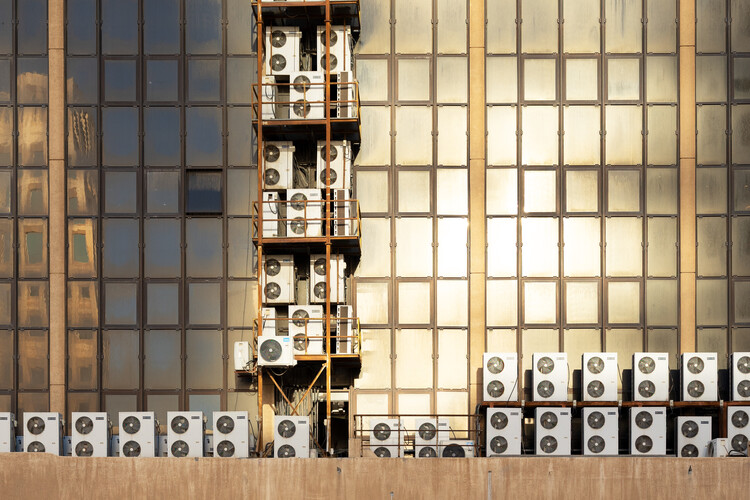Pavilion Of Bahrain Pushes Boundaries With Innovative Cooling Infrastructures
The Pavilion of Bahrain pushes boundaries with innovative cooling infrastructures at the 2023 Venice Architecture Biennale. During the 18th International Architecture display of La Biennale di Venezia, the Kingdom of Bahrain will be showcasing a pavilion display named "Sweating Assets."
Author:George EvansMay 11, 202316.4K Shares824.1K Views

The Pavilion of Bahrain pushes boundaries with innovative cooling infrastructuresat the 2023 Venice Architecture Biennale. During the 18th International Architecture display of La Biennale di Venezia, the Kingdom of Bahrain will be showcasing a pavilion display named "Sweating Assets."
The show, curated by architects Latifa Alkhayat and Maryam Aljomairi, draws attention to the connection between Bahrain's excessive heat and humidity and the human desire for comfort.
The exhibition's curators hope to demonstrate how adaptable strategies and careful use of available resources may optimize the effectiveness of the essential cooling infrastructure while minimizing its impact on the natural world.
The pavilion recreates the circumstances and experiences of island life through carefully orchestrated temperature, humidity, and condensation. In this work, we investigate the feasibility of repurposing the abundant condensate produced by powerful air conditioning systems to rehydrate parched wetland ecosystems and agricultural regions.
The pavilion, located in Arsenale (Artiglierie), investigates Bahrain's unique climatic circumstances of high heat and humidity, as well as present comfort expectations. The display moves between sizes, from household to territorial, to show the role of cooling infrastructure in connection to a larger environment.
Sweating Assets is an adaptive approach to resource management that requires optimizing existing systems rather than starting from scratch. It regards our built surroundings, infrastructure, and relationships as a complex, resource-rich, man-made landscape that is vulnerable to cannibalization.
While not advocating the excessive use of cooling systems, the possibilities (rather than solutions) made possible by their essential use are shown.
In Bahrain's extreme heat and humidity, air conditioning generates a disproportionately large amount of condensate. Using this unexpected outcome of human activity, loose ends are knotted, sending water to other sections of the greater environment.
The microclimate of the show is a dance of temperature, humidity, and condensation. It portrays the ever-present circumstances and experiences of island life.
A request for the collection and rerouting of incidental condensate reserves towards wetlands and agricultural regions in need of replenishment supplements the import of climate. A landscape is juxtaposed with a frigid condensing volume, highlighting the contradiction of industrial systems versus ephemeral natural grounds.
This volume represents the continuously cooled and condensing dwelling enclosures. At dew point temperature, water continually escapes over the surface of Venice's thick air when it comes into touch with the volume. Coatings, channels, and grooves regulate condensation patterns as well as water circulation.
Water is collected from the surface and directed to 'deposits' on an earthen terrain. Each deposit represents an area that has been scaled based on quantitative study of the cooling they require and the condensate they create.
The brochure "Sweating Assets: On Climate Conditioning and Ecology" supplements the exhibition with numerical analyses as well as qualitative hypotheses and essays. A countrywide audit investigates cooling infrastructure, its environmental effects, and water-based offerings.
Final Words
As the global climate crisis intensifies, the Pavilion of Bahrain serves as a powerful reminder that the built environment can play a crucial role in mitigating the effects of rising temperatures.
Through its groundbreaking designs and emphasis on sustainability, Bahrain is leading the way in reimagining cooling infrastructures for a greener and cooler future.
Jump to

George Evans
Author
George Anderson, an exceptional architectural designer, envisions and brings to life structures that transcend the realm of imagination. With an unwavering passion for design and an innate eye for detail, George seamlessly blends form and function, creating immersive spaces that inspire awe.
Driven by a deep appreciation for the interplay of space, light, and materials, George's innovative approach redefines the possibilities of architectural design. His visionary compositions leave an indelible mark, evoking a sense of wonder and transforming the built environment.
George Anderson's transformative designs and unwavering dedication continue to shape the architectural landscape, pushing the boundaries of what is possible and inspiring generations to come.
Latest Articles
Popular Articles